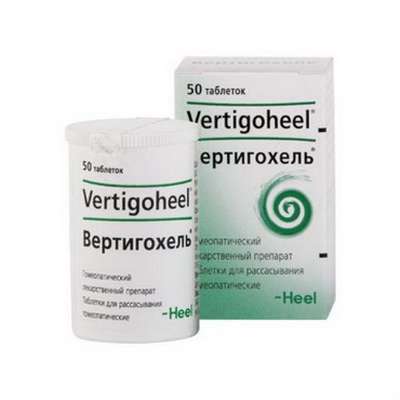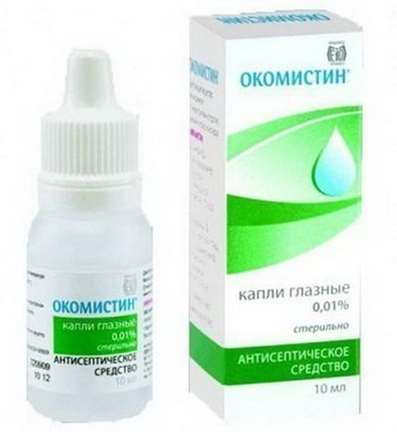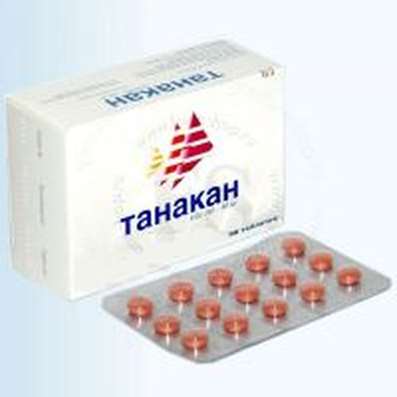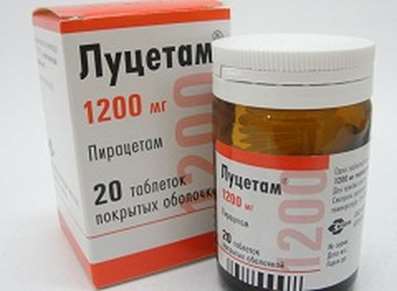Instruction for use: Propranolol
I want this, give me price
Trade name of the drug – Anaprilin, Anaprilin solution for injections 0,25%, Anaprilin tablets, Obzidan, Propranolol, Inderal, Propranolol Nycomed, Inderal LA, Vero Anaprilin, Propranobene, Gemangiol
The Latin name of the substance Propranolol
Propranololum (genus. Propranololi)
Chemical rational name: 1 - [(1-methylethyl) amino] -3- (1-naphthalenyloxy) -2-propanol (as hydrochloride); contained in the dosage form racemic mixture of enantiomers
Gross formula C16H21NO2
Pharmacotherapeutic group: Beta-blockers
The nosological classification (ICD-10)
F10.3 abstinence: Alcohol withdrawal syndrome; abstinence symptom; Abstinence syndrome in alcoholism; abstinence; alcohol Abstinence; alcohol withdrawal; Alcohol abstinence; Alcohol withdrawal syndrome; postabstinentnom disorder; postabstinentnom state; alcohol withdrawal syndrome; withdrawal syndrome; The syndrome of alcohol abstinence; alcohol withdrawal syndrome; Status of abstinence
F40.0 Agoraphobia: Claustrophilia; Fear of staying in a crowd
F40.1 Social phobias: social withdrawal; Social detachment; Social phobia; Social Anxiety Disorder / Social Phobia; social phobia; Social phobia
F40.2 Specific (isolated) phobias: Claustrophilia
F41.0 Panic disorder [episodic paroxysmal anxiety]: Panic condition; Panic attack; Panic; Panic disorder
F41.1 Generalized anxiety disorder: Generalized anxiety disorder; generalized anxiety; phobic neurosis; Panic reaction; anxiety disorder
F43.2 Disorder adaptive reactions: The disorder of mental adaptation
F45 Somatoform disorders: psychosomatic disorder; Psychosomatic disorders; Psychosomatic diseases; anxiety states with somatic diseases; Functional psychosomatic disorders of the cardiovascular system
G43 Migraine: The pain of migraine; Migraine; hemiplegic migraine; Migraine headache; A migraine attack; Continuous headache; hemicrania
I10 Essential (primary) hypertension: hypertension; Arterial hypertension; Arterial hypertension crisis course; Essential Hypertension; Essential hypertension; Essential hypertension; Essential hypertension; Essential hypertension; Primary hypertension; Arterial hypertension, complications of diabetes; The sudden increase in blood pressure; Hypertensive disorders of blood circulation; hypertensive condition; hypertensive crises; arterial Hypertension; malignant Hypertension; Hypertonic disease; hypertensive crises; accelerated hypertension; malignant hypertension; The aggravation of hypertensive disease; Transient hypertension; Isolated systolic hypertension
I15 Secondary hypertension: Arterial hypertension, complications of diabetes; hypertension; The sudden increase in blood pressure; Hypertensive disorders of blood circulation; hypertensive condition; hypertensive crises; hypertension; arterial Hypertension; malignant Hypertension; hypertensive crises; accelerated hypertension; malignant hypertension; The aggravation of hypertensive disease; Transient hypertension; hypertension; Arterial hypertension; Arterial hypertension crisis course; renovascular hypertension; Hypertension symptomatic; Renal hypertension; Renovascular hypertension; renovascular hypertension; Symptomatic hypertension
I20 Angina [angina]: Heberden disease; Angina pectoris; The attack of angina pectoris; recurrent angina; Spontaneous angina; Stable angina pectoris; Angina rest; Angina progressing; Angina mixed; Angina spontaneous; stable angina; Chronic stable angina; Angina Syndrome X
I20.0 Unstable angina: heberden disease; Angina pectoris; The attack of angina pectoris; recurrent angina; Spontaneous angina; Stable angina pectoris; Angina rest; Angina progressing; Angina mixed; Angina spontaneous; stable angina; Chronic stable angina; Angina Syndrome X
I25 Chronic ischemic heart disease: Coronary heart disease on the background of hypercholesterolemia; Coronary heart disease is a chronic; Coronary heart disease; Stable coronary artery disease; Percutaneous transluminal angioplasty; Myocardial ischemia, arteriosclerosis; Recurrent myocardial ischemia
I34.1 prolapse [prolapse] mitral valve: Rupture of papillary muscle; Barlow syndrome; Mitral valve prolapse syndrome; Mitral valve prolapse
I47.1 Supraventricular tachycardia: Supraventricular paroxysmal tachycardia; supraventricular tachyarrhythmia; supraventricular tachycardia; Supraventricular arrhythmias; Supraventricular paroxysmal tachycardia; supraventricular tachyarrhythmias; supraventricular tachycardia; Neurogenic sinus tachycardia; orthodromic tachycardia; Paroxysmal supraventricular tachycardia; Paroxysm of supraventricular tachycardia; Paroxysm of supraventricular tachycardia with WPW-syndrome; Paroxysm of atrial tachycardia; Paroxysmal supraventricular tachyarrhythmia; Paroxysmal supraventricular tachycardia; Politopnye atrial tachycardia; Atrial fibrillation; Atrial tachycardia is true; Atrial tachycardia; Atrial tachycardia with AV block; reperfusion arrhythmias; Reflex Bertsolda-Jarisch; Recurrent sustained supraventricular paroxysmal tachycardia; Symptomatic ventricular tachycardia; Sinus tachycardia; Supraventricular paroxysmal tachycardia; supraventricular tachyarrhythmia; supraventricular tachycardia; supraventricular arrhythmia; supraventricular arrhythmias; Tachycardia of AV connections; supraventricular tachycardia; Tachycardia orthodromic; sinus tachycardia; The nodal tachycardia; Chaotic atrial tachycardia politopnye; Wolff-Parkinson-White
I49.4 Other and unspecified premature depolarization: extrasystole arrhythmia; extrasystole; extrasystole unspecified
I49.9 Irregular heartbeat, unspecified: Paroxysmal supraventricular tachycardia; extrasystole arrhythmia; Atrial fibrillation tachysystolic; supraventricular tachyarrhythmia; supraventricular arrhythmias; AV reciprocating tachycardia; AV-nodal reciprocating tachycardia; ventricular fibrillation; Irregular heartbeat; Antidromic reciprocating tachycardia; Cardiac arrhythmias; Arrhythmias; Arrhythmia; Heart arythmy; Arrhythmia due to hypokalemia; ventricular tachyarrhythmias; The high frequency of ventricular contraction; Cardiac arrhythmias; Paroxysmal supraventricular arrhythmia; Paroxysmal supraventricular arrhythmia; Paroxysmal dysrhythmia; Paroxysmal atrial-ventricular rhythm; cardiac arrhythmias; supraventricular tachycardia; tachyarrhythmia; Precordial abnormal pulsation
N95.1 menopausal and menopausal status of women: Atrophy of the mucosa of the lower genital tract, caused by estrogen deficiency; Vaginal dryness; Autonomic dysfunction in women; gipoestrogeniya state; Deficiency of estrogen in menopausal women; Degenerative changes of the mucous membrane in the menopause; Natural menopause; an intact uterus; climacteric; Menopause women; Menopause in women; menopausal depression; Climacteric ovarian dysfunction; Menopause; Climacteric neurosis; Menopause; Menopausal symptoms complicated psychovegetative; Climacteric syndrome; Climacteric vegetative disorders; Climacteric psychosomatic disorder; menopausal disorders; Menopausal disorders in women; menopausal condition; Climacteric vascular disorders; Menopause; Menopausal vasomotor symptoms; menopausal period; Lack of estrogen; Feeling the heat; Pathological menopause; perimenopause; menopause; postmenopausal; Premature menopause; premenopauznom period; tides; hot flashes; flushing in the Meno and postmenopausal; Hot flashes / hot flashes in menopause; Heart attack during menopause; Early menopause in women; Disorders of menopause; climacteric syndrome; Vascular complications of menopause; Physiological menopause; Estrogendefitsitnye state; premature Menopause
O62.2 Other uterine inertia: metroparalysis; The weakness of labor activity; Decreased uterine tone; Induction of labor; Induction of labor at term; Induction of labor at term or near term; Activation of labor
R25.1 Tremor, unspecified: shake; senile tremor; Tremor; muscle tremors; Tremor when portal-systemic encephalopathy; Essential tremor family; Titubatsiya
R45.6 Physical aggression: Aggressiveness; Aggressive state; Aggression; Aggressive behavior; autoaggression
CAS code 525-66-6
Characteristic
Propranolol hydrochloride - a white crystalline powder. Soluble in water and alcohol.
Pharmacological Properties of Propranolol
Pharmachologic effect - antianginal, hypotensive, antiarrhythmic, uterotoniziruyuschee.
Blocks beta1 and beta2-adrenergic receptors, has a membrane stabilizing effect. It inhibits sinoatrial node automaticity, suppresses the occurrence of ectopic foci in atria, AV compound ventricles (to a lesser degree). It reduces the speed of conduction of excitation in the AV connection on the bundle of Kent, mainly in the anterograde direction. Slows heart rate, reduces the force of heart rate and myocardial oxygen demand. Decreases cardiac output, renin secretion, blood pressure, renal blood flow and glomerular filtration rate. It suppresses the reaction of baroreceptors in the aortic arch lowering blood pressure.
After receiving a single dose of anti-hypertensive effect lasts for 20-24 hours. A single dose of long-acting forms of equivalent receiving multiple doses of propranolol hydrochloride. Hypotension is stabilized by the end of the 2nd week of treatment. With prolonged use reduces venous return, it has cardioprotective effects (significantly reduces the risk of recurrent myocardial infarction and sudden death by 20-50%). Patients with a mild form of high blood pressure - reduces the likelihood of developing coronary heart disease and stroke. In coronary artery disease reduces the frequency of attacks, increases exercise tolerance, reduces the need for nitroglycerin. It is most effective in young patients (up to 40 years) with type hyperdynamic circulation and elevated levels of renin. Increases bronchial and uterine contractility tone (reduces bleeding during childbirth and in the postoperative period), enhances secretory and motor activity of the gastrointestinal tract. Inhibits platelet aggregation and activates fibrinolysis. It inhibits lipolysis in adipose tissue, preventing the increase of free fatty acids (the concentration of triglycerides in the plasma and increased atherogenic factor. Inhibits glycogenolysis, glucagon and insulin secretion, the conversion of thyroxine to triiodothyronine. Decreases intraocular pressure, reduces the secretion of aqueous humor.
Prolonged administration (18 months) rats and mice of doses up to 150 mg / kg / day revealed no carcinogenic properties and adverse effects on fertility. At a dose of 150 mg / kg / day, 10 times the MRDCH, has embryotoxic effects (increase in the incidence of fetal resorption).
When ingestion rapidly and almost completely absorbed from the gastrointestinal tract (90%). Bioavailability is 30-40% (the effect of "first pass"), it depends on the nature of the food and the intensity of hepatic blood flow and increases during chronic administration (produced metabolites that inhibit the liver enzymes). Cmax in plasma observed after 1-1.5 hours, or 6 hours (for a sustained release formulation). Associated with the plasma protein by 90-95%; T1 / 2 is 2-5 hours (10 hours for extended-release formulation). The volume of distribution - 5.3 l / kg. Accumulates in the lung tissue, brain, kidney, heart, passes through the placental barrier, enters the breast milk. Undergoes glucuronidation in the liver (99%). Excreted in the bile into the intestine and is reabsorbed deglyukuroniruetsya (T1 / 2 on the background of the introduction of a course can be extended to 12 hours). Excreted by the kidneys as metabolites.
Application of the substance Propranolol
Hypertension, angina pectoris, sinus tachycardia (including hyperthyroidism), supraventricular tachycardia, atrial fibrillation tachysystolic, supraventricular and ventricular premature beats, hypertrophic cardiomyopathy, myocardial infarction, mitral valve prolapse, subaortic stenosis, simpatikoadrenalovy crisis in patients with diencephalic syndrome, cardiopsychoneurosis, portal hypertension, essential tremor, panic attacks, aggressive behavior, migraine (prevention), auxiliary treatment of pheochromocytoma (only in combination with alpha-blockers), hyperthyroidism (including preoperative preparation), thyrotoxic crisis, the primary weakness labor, menopausal vasomotor symptoms, withdrawal symptoms; treatment of akathisia caused by antipsychotic drugs.
Contraindications for Propranolol
Hypersensitivity, AV block II-III degree sinoatrial block, bradycardia (less than 55 u. / Min), sick sinus syndrome, hypotension, acute and severe chronic heart failure, Prinzmetal angina, cardiogenic shock, obliterating vascular disease, bronchial asthma.
Restrictions to application
Chronic bronchitis, emphysema, diabetes, hypoglycemia, acidosis, liver and kidney function, psoriasis, irritable bowel syndrome, myasthenia gravis, pregnancy, breast-feeding, old age.
Pregnancy and breast-feeding
Possible, if the expected effect of therapy outweighs the potential risk to the fetus. At the time of treatment should stop breastfeeding.
Side effect of Propranolol
Cardio-vascular system and blood (blood, hemostasis): bradycardia, heart failure, AV block, hypotension, a violation of the peripheral circulation, thrombocytopenic purpura, leukopenia, agranulocytosis.
From the nervous system and sensory organs: fatigue, dizziness, headache, insomnia, drowsiness, nightmares, reducing the rate of mental and motor reactions, emotional lability, depression, agitation, hallucinations, disorientation in time and space, short-term amnesia, disturbance of sensitivity, paresthesia; dry eyes, visual disturbances, keratoconjunctivitis.
From the digestive tract: nausea, vomiting, abdominal pain, diarrhea or constipation, thrombosis of the mesenteric artery, ischemic colitis.
From the respiratory system: sore throat, chest pain, cough, shortness of breath, broncho and laryngospasm, respiratory distress syndrome.
With the Skin: alopecia, rash, itching, worsening of psoriasis.
Other: withdrawal, weakening of libido, impotence, Peyronie's disease, arthralgia, allergic reactions, lupus syndrome, hypoglycemia, fever.
Interaction
(Mutually) negative effect of verapamil and diltiazem on the myocardium, prolong the action of non-depolarizing neuromuscular blocking agents, inhibits the excretion of lidocaine. Loosen the hypotensive effect of NSAIDs, corticosteroids, estrogens, cocaine; amplify - nitrates and other antihypertensives. Heparin, antacids lowers plasma levels; cimetidine and phenothiazines - increase. Not recommended simultaneous reception of MAO inhibitors. Theophylline metabolism slows down and increases its concentration in blood plasma.
Overdose
Symptoms: dizziness, bradycardia, arrhythmia, heart failure, hypotension, collapse, difficulty breathing, akrotsianoz, convulsions.
Treatment: gastric lavage and the appointment of absorbent, symptomatic therapy: atropine, beta-adrenergic agonist (isoprenaline, izadrin), sedatives (diazepam, lorazepam), cardiac (dobutamine, dopamine, epinephrine) medicines pressor agents, glucagon, etc .; may conduct transvenous pacing. Hemodialysis is ineffective.
Routes of administration
intravenously, orally, in conjunctival.
Precautions for substance Propranolol
Treatment should be under regular medical supervision. With prolonged use should consider the additional purpose of cardiac glycosides. It reduces the compensatory cardiovascular reactions in response to the use of general anesthetics. In just a few days before the anesthesia should stop taking or select an anesthetic with the least negative inotropic effect. Not recommended in / in a child. Elderly patients are at increased risk of side effects from the CNS. If abnormal liver function is recommended to decrease doses and observation in the first 4 days of therapy. May mask the symptoms of hypoglycaemia (tachycardia) in patients with diabetes, insulin and others. Hypoglycemic agents. Perhaps the increased severity of hypersensitivity reactions and the lack of effect of conventional doses of epinephrine with aggravated allergic history. At the time of treatment remenduetsya the use of alcohol. Be wary of during the drivers of vehicles and people skills relate to the high concentration of attention. Stop treatment gradually, over about 2 weeks.
Special instructions
During treatment, you can change the test results in laboratory studies (increased urea, enzymes, phosphatases, LDH).

 Cart
Cart





